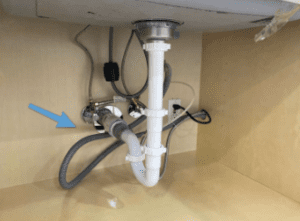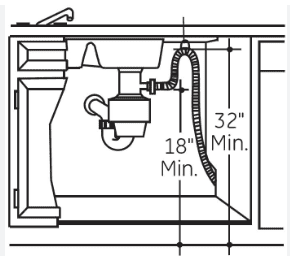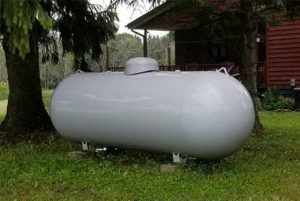Stucco Exterior

Stucco Exterior
What should I know about a home with a Stucco Exterior?
If you’re considering buying a home with a stucco exterior, there are several things you should be aware of:
Potential for moisture damage: Stucco can be vulnerable to moisture damage if not installed and maintained properly. Water intrusion can lead to mold growth, decay, and other structural issues. It’s important to have the stucco inspected regularly and to address any issues promptly.
Maintenance requirements: Stucco requires regular maintenance to ensure its longevity. This includes cleaning, sealing, and painting as needed. It’s important to follow manufacturer’s recommendations and hire a qualified professional to perform any maintenance or repairs.
Energy efficiency: Stucco can provide good insulation and energy efficiency, which can result in lower heating and cooling costs.
Fire resistance: Stucco is fire-resistant, which can be an advantage in areas prone to wildfires.
Aesthetics: Stucco can provide a unique and attractive appearance, but it’s important to ensure that the color and texture of the stucco complement the rest of the home’s exterior.
Pest resistance: Stucco is resistant to pests such as termites and carpenter ants, which can be an advantage in areas with high pest activity.
Home value: A well-maintained stucco exterior can add value to a home, but it’s important to ensure that any issues are addressed promptly to avoid any negative impact on the home’s value.
Stucco is a type of plaster that is applied to the exterior of a building. It is made from cement, sand, lime, and water, and can be applied in a variety of textures and finishes. Stucco has been used for centuries as a durable and attractive exterior finish.
There are several different types of stucco:
Traditional stucco: This is the most common type of stucco and is made from cement, sand, lime, and water. It is applied in several coats, including a base coat, a reinforcement layer, and a finish coat. Traditional stucco can be applied in a variety of textures and finishes.
Exterior insulation and finish systems (EIFS): EIFS is a type of stucco that includes a layer of insulation. It is made from a foam insulation board that is attached to the exterior wall, covered with a base coat, a reinforcement layer, and a finish coat. EIFS can be applied in a variety of textures and finishes and provides excellent insulation.
One-coat stucco: One-coat stucco is a newer type of stucco that is applied in one layer instead of multiple layers. It is made from a pre-mixed cement and sand mixture that includes synthetic fibers. One-coat stucco can be applied in a variety of textures and finishes.
Acrylic stucco: Acrylic stucco is a type of stucco that includes acrylic polymers. It is applied in a similar manner to traditional stucco but provides better flexibility and durability. Acrylic stucco can be applied in a variety of textures and finishes and is available in a wide range of colors.
When it comes to maintenance, stucco requires regular cleaning, sealing, and painting to ensure its longevity. It’s important to follow manufacturer’s recommendations and hire a qualified professional to perform any maintenance or repairs.
What is the best kind of stucco?
There is no one-size-fits-all answer to the question of which is the best kind of stucco, as it depends on a variety of factors, including the climate, location, and architectural style of the building, as well as personal preference.
Traditional stucco has been the most commonly used type of stucco for decades and is a time-tested option for those seeking a traditional or classic look. It is made from a mixture of sand, cement, lime, and water and is applied in three layers, including a base coat, a reinforcement layer, and a finish coat. Traditional stucco is known for its durability and is resistant to fire, mold, and pests.
EIFS stucco is another popular option that has been gaining in popularity in recent years. It is an exterior insulation and finish system that includes a layer of insulation board attached to the exterior wall, covered with a base coat, a reinforcement layer, and a finish coat. EIFS provides excellent insulation and is known for its energy efficiency and versatility.
Acrylic stucco is a newer type of stucco that includes acrylic polymers. It is more flexible and durable than traditional stucco and can be applied in a wider range of colors and finishes.
One-coat stucco is a newer type of stucco that is applied in one layer instead of multiple layers. It is made from a pre-mixed cement and sand mixture that includes synthetic fibers. One-coat stucco can be applied in a variety of textures and finishes and is quicker and easier to install than traditional stucco.
Ultimately, the best kind of stucco for your building will depend on several factors, including your location, climate, personal style, and budget. It is important to work with a qualified professional who can help you determine the best type of stucco for your needs and ensure that it is installed and maintained properly.
Lawsuits associated with stucco siding
There have been numerous lawsuits associated with stucco siding, particularly in humid or rainy climates, where moisture can penetrate through the stucco and cause damage to the building’s structure. Some of the most common issues associated with stucco siding include:
Moisture damage: If stucco is not installed correctly or maintained properly, it can allow moisture to penetrate through the surface and into the building’s structure, leading to rot, mold, and other types of damage.
Improper installation: If stucco is not installed according to manufacturer’s specifications or building codes, it can lead to structural problems, such as cracks or gaps, that can allow moisture to seep in.
Building defects: In some cases, the building itself may have design or construction defects that contribute to moisture damage and other issues associated with stucco siding.
Warranty claims: Some homeowners have filed lawsuits against stucco manufacturers or contractors, alleging that their products or services did not meet their advertised warranty claims.
While stucco siding can be a durable and attractive exterior finish, it’s important to ensure that it is installed and maintained properly to avoid any potential issues. Homeowners should work with qualified professionals who have experience with stucco installation and maintenance to ensure that their siding is installed correctly and that any issues are addressed promptly. It’s also important to keep up with regular maintenance, such as cleaning, sealing, and painting, to ensure that the stucco remains in good condition over time.
What type of stucco has had the most lawsuits?
While there have been lawsuits related to different types of stucco siding, the vast majority of cases have been related to a particular type of stucco called “synthetic stucco,” also known as Exterior Insulation and Finish System (EIFS) stucco.
Synthetic stucco was popular in the 1980s and 1990s as a more energy-efficient and cost-effective alternative to traditional stucco. However, it was found to have significant moisture-related issues that could cause damage to the building’s structure. The problem is that synthetic stucco is not very breathable, meaning that moisture can become trapped inside the walls, causing rot, mold, and other issues.
In addition to moisture problems, synthetic stucco was also found to be prone to cracking, which could further allow moisture to penetrate into the building. As a result, many homeowners who had synthetic stucco installed on their homes in the past have filed lawsuits against manufacturers and contractors alleging that they were not properly warned about the potential for moisture-related issues.
It’s worth noting that not all synthetic stucco installations have issues, and there are steps that homeowners can take to mitigate potential problems. For example, installing proper flashing, sealing, and drainage systems, as well as conducting regular maintenance, can help prevent moisture-related damage. However, it’s still important for homeowners to be aware of the potential risks associated with synthetic stucco and to work with qualified professionals who have experience with this type of siding.
How can I tell if I have (EIFS) stucco?
EIFS (Exterior Insulation and Finish System) stucco can be difficult to identify, as it can look very similar to traditional stucco. However, there are a few signs that may indicate that your home has EIFS stucco:
The siding is soft or spongy to the touch: EIFS stucco is designed to be lightweight, and it may feel soft or spongy if you press on it.
The siding has a uniform texture: EIFS stucco typically has a smooth and uniform texture, as it is applied in layers and then sanded down to create a consistent finish.
The siding has no visible seams: Traditional stucco is applied in multiple coats, and the seams between the coats may be visible. In contrast, EIFS stucco is typically applied in a single layer, with no visible seams.
The siding has decorative accents: EIFS stucco is often used to create decorative accents, such as cornices, quoins, or other architectural details.
If you are unsure whether your home has EIFS stucco, you can hire a qualified professional to inspect your siding and determine what type of material it is. It’s important to know what type of siding you have so that you can take proper care of it and address any potential issues.





